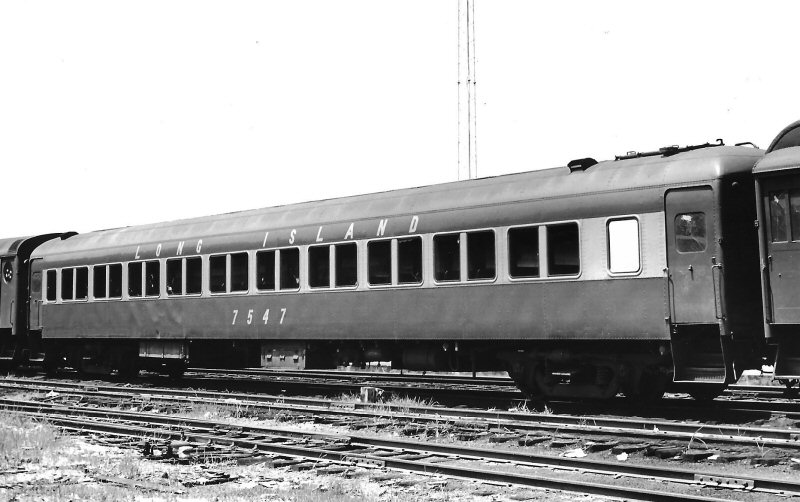workextra wrote: ↑Thu May 28, 2020 12:12 am
Hi, does anyone have Interior photos of these cars when in service on the LIRR and also when they were inservcie for the B&M.
While in LI service, we’re they all coaches with their original B&M seats?
If I’m not mistaken, I think the LI may have put the same flooring down as on the modified P72s and MP54s at the time. Did they also change the seats?
Also does anyone know how the cars AC work?
Thanks.
Workextra:
I see you have many detailed questions here.
I'll try to provide a few answers based on my experience as an owner of three (2 Budd + 1 Pullman) lightweight passenger cars since 1987.
I recommend you find a copy of the Official Pullman-Standard Library, Volume 10. It covers NH, B&M, MEC, BAR, Erie, DL&W, LV and LIRR lightweight passenger cars. Builder's exterior/interior photos, floor plans, technical information, etc. These "American Flyer" cars that LIRR acquired from B&M and BAR are in that volume.
You may want to look at my LIRR Parlor Cars website, which also covers the lightweight cars that LIRR acquired "second hand" from B&M, BAR and other railroads. Here is a direct link to that page:
http://www.dominionrailvoyages.com/jhd/lirr/page4.html
Electrical: 32 VDC and 64 VDC were the most common electrical systems in that era. An axle driven ("Spicer drive") generator (or a belt driven generator) produced DC to charge the car's DC storage batteries and provide power for lighting and mechanical air conditioning. The car operated off the batteries. Special light bulbs to provide the correct wattage illumination at 32 or 64 volts. Air conditioning compressor motor, condenser fan motor and blower fan motor were DC motors operating at battery voltage; heavier gauge wiring was used to handle the higher amperage needed at lower DC voltage. Some passenger cars had a device to produce a small amount of 110 VAC power from lower voltage DC power, for things such as an electrical shaver outlet in a toilet annex/restroom. Some cars with higher electrical loads had their own self-contained power supply, with a diesel generator system, or a propane fueled Waukesha engine-generator unit; some cars had a Waukesha “ice engine” to power the air conditioning system.
Plumbing: Usually a pressurized water system, with potable water storage tank(s) under the car, pressurized with reduced pressure regulated air drawn off the air brake line. Potable water storage tank(s) were protected from freezing by steam heat. The only place I recall an interior overhead water tank that could operate on gravity was in the kitchen of a dining car and the kitchen of a business car.
Air: Lower pressure air was used to pressurize the plumbing system, for supplying water to toilets and sinks. On some other railroads, pressurized air was also used to operate end doors. When Amtrak converted their DC/battery/steam cars to 480 VAC HEP, they converted the communicating signal air line to the main reservoir air line.
